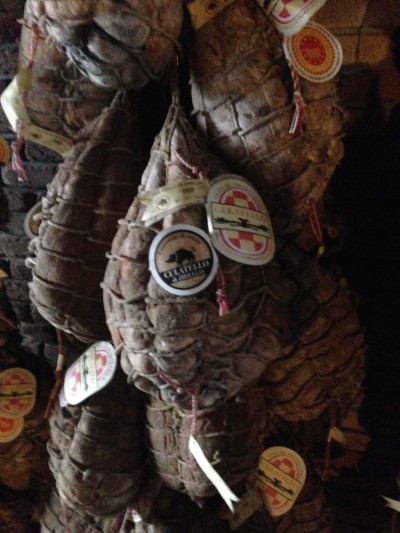As we enter the caves underneath Enrico’s restaurant and salumeria, I ask him how long he has been making Culatello Di Zibello.
An accomplished chef who spent many years in Lyon, he speaks perfect French with a wonderful Italian accent. I find myself in this situation a lot when I am in Italy – conversations that use 3 languages – English, Italian and French.
“Combien d’annees?”
“Well, I am the 6th generation, so approximately 260 years.”
Two. Hundred. And. Sixty. Years.
That’s a lotta ham.
We are in the town of Colorno, just north of Parma on the Po River. Like most of my week here in Italy this visit, it is foggy. Extremely. Parma is known for “nebbio”, but the fog here is extra thick. Extra moist. You can feel it immediately. Its just, well, different.
You’d never guess the porcine glories that exist behind and underneath the trattoria Al Vedel from the street. The parking lot full of locals on this grey, damp Saturday, hint that something wonderful awaits inside.
Enrico starts at the beginning. A bright, small, modern production area. State of the art, really. I was a tiny bit disappointed. I wanted olde worldy goodness. But I hang in. To be honest, here I am visiting a culatello producer and I basically know nothing of the subject. It’s made from pork. It’s delicious. That sums up my background info for this adventure.
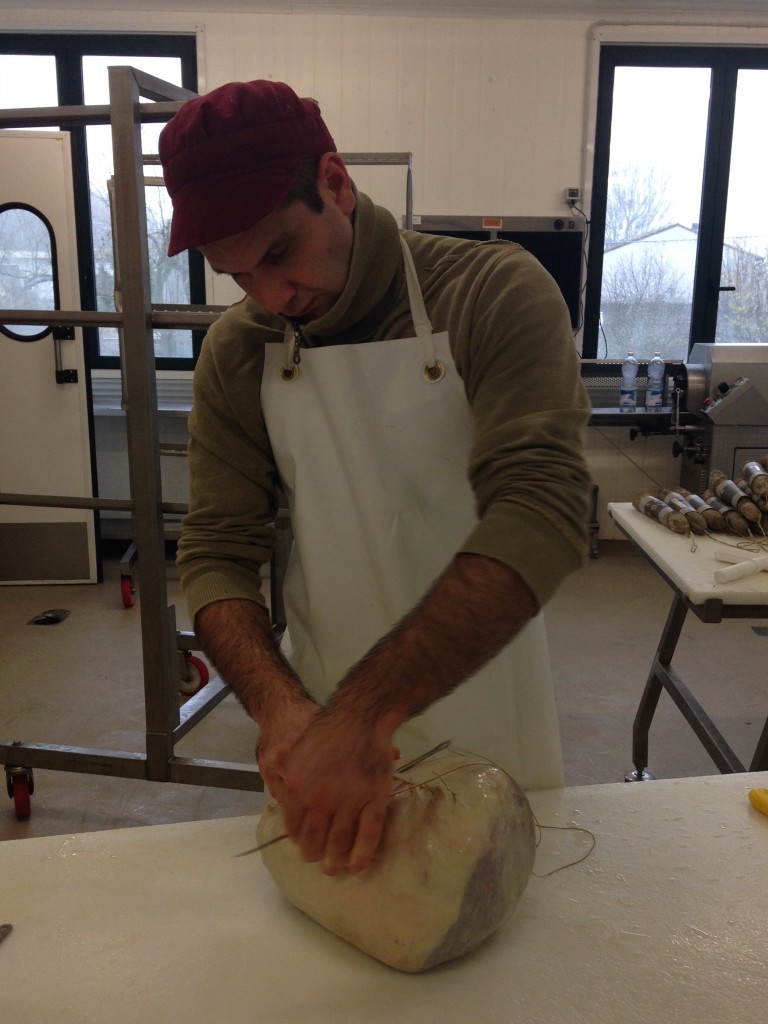
Only 8 villages and 45 producers are certified DOP to produce Culatello di Zibello. The pigs must come from Parma and must be fed the whey from the production of Parmigiano Reggiano. Production only occurs from September to February when the weather is cool – too much heat could cause unwanted fermentation.
Culatello comes from the buttock of 2 year old pigs, its little cousin Fioccio comes from the thigh. Unlike Proscuitto this is a boneless product. Approximately 18 kilos of fresh meat turn into 9kg of the most wonderful dry cured ham after 2 years of aging.
Enrico is proud to tell me the meat arrives still warm from slaughter. Here they await its arrival, Mediterranean sea salt at the ready. Not, he says specifically, that ‘stuff ‘ from the Atlantic. The pieces are massaged with salt and left to chill for 5 days.
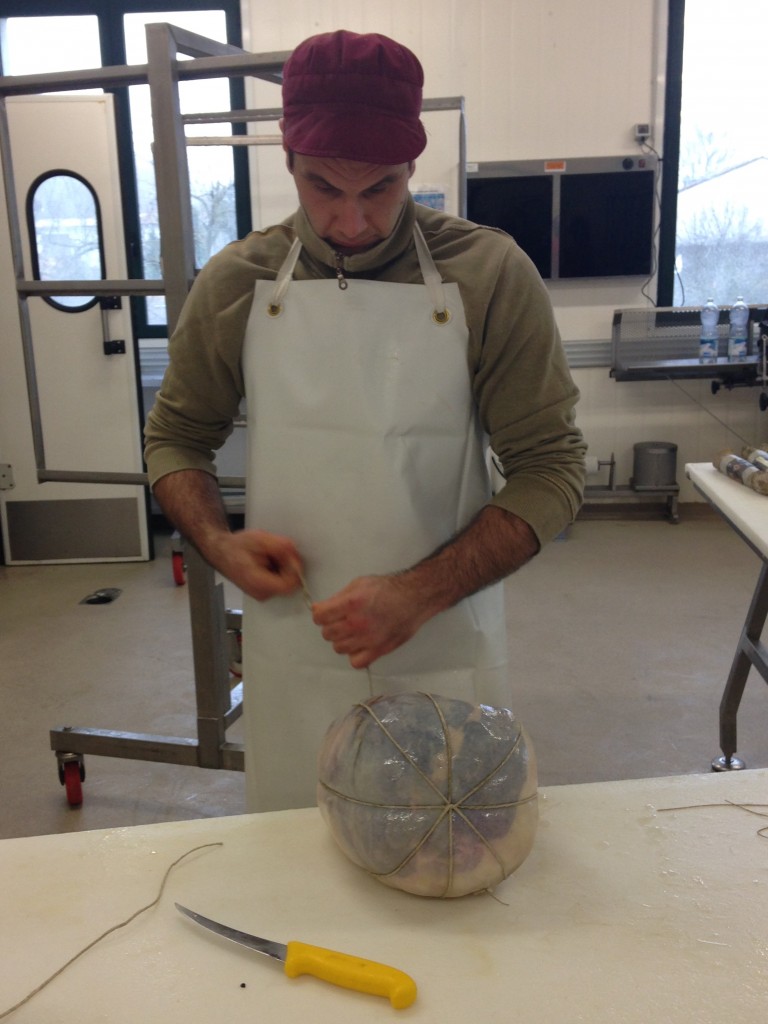
On the 6th day, the marinated meat is tucked into pig bladders that have been soaking in vinegar and wine. The team sews them up, all snug, and ties them up into perfect packages. The bladder is pierced many times – allowing moisture from the meat to exit, yet acting as a barrier against the moisture of the foggy Po valley to enter.
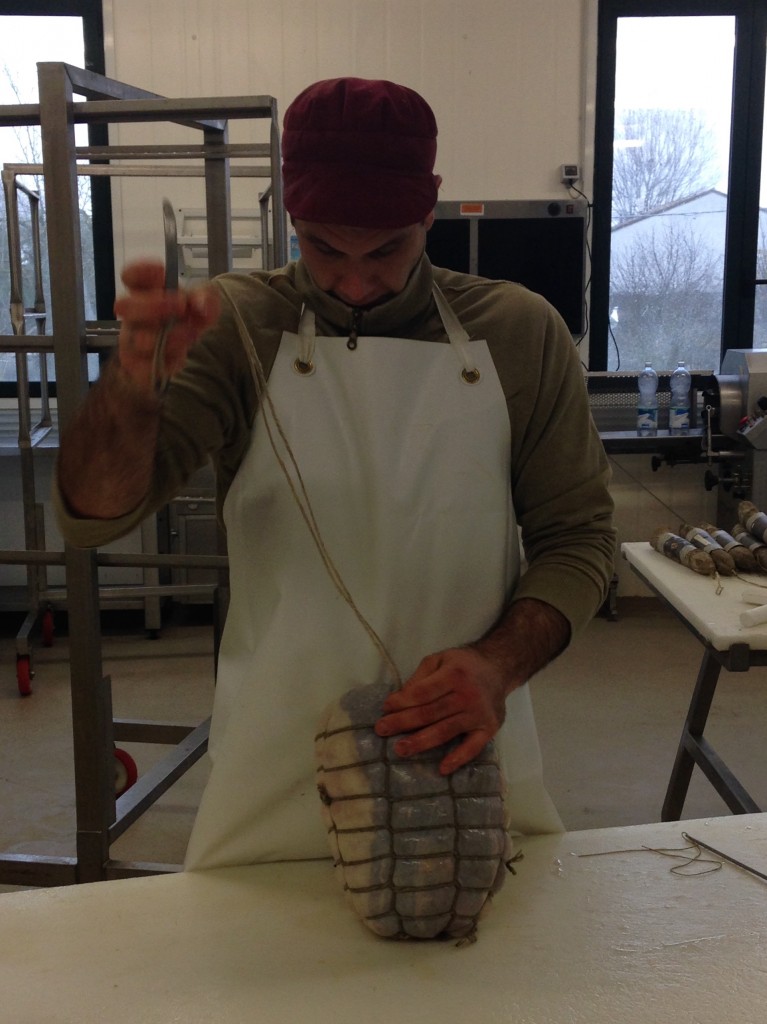
I watch in awe the tying of these Culatellos into perfect bundles. It is in fact an art, difficult and painful to master – the skills passed down one generation to the next. Our sewer today learned from a 92 year old man who still comes in almost every day to put a few Culatello’s together – a skilled and experienced worker can do 6 an hour.
The fresh Culatelli are then tagged with their DOP designation and left refrigerated for a further 6 days.
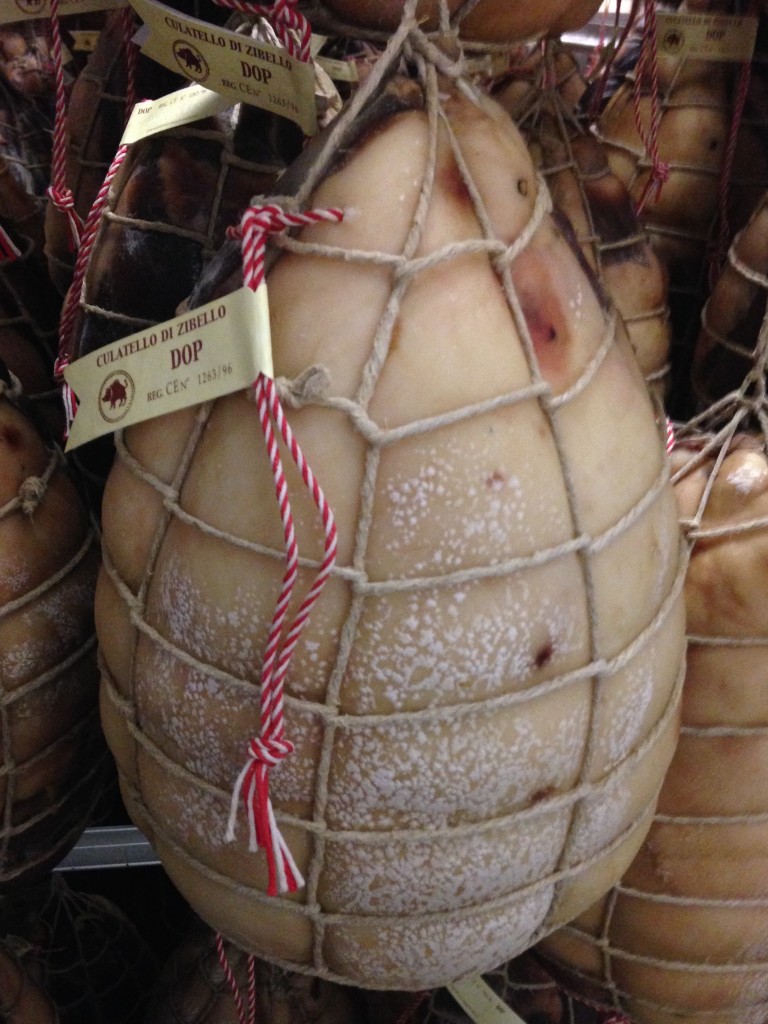
We follow Enrico into a small elevator, which takes us one level below ground.
When the doors open I gasp.
‘Cantina Naturale”, a veritable Hall of Hams.
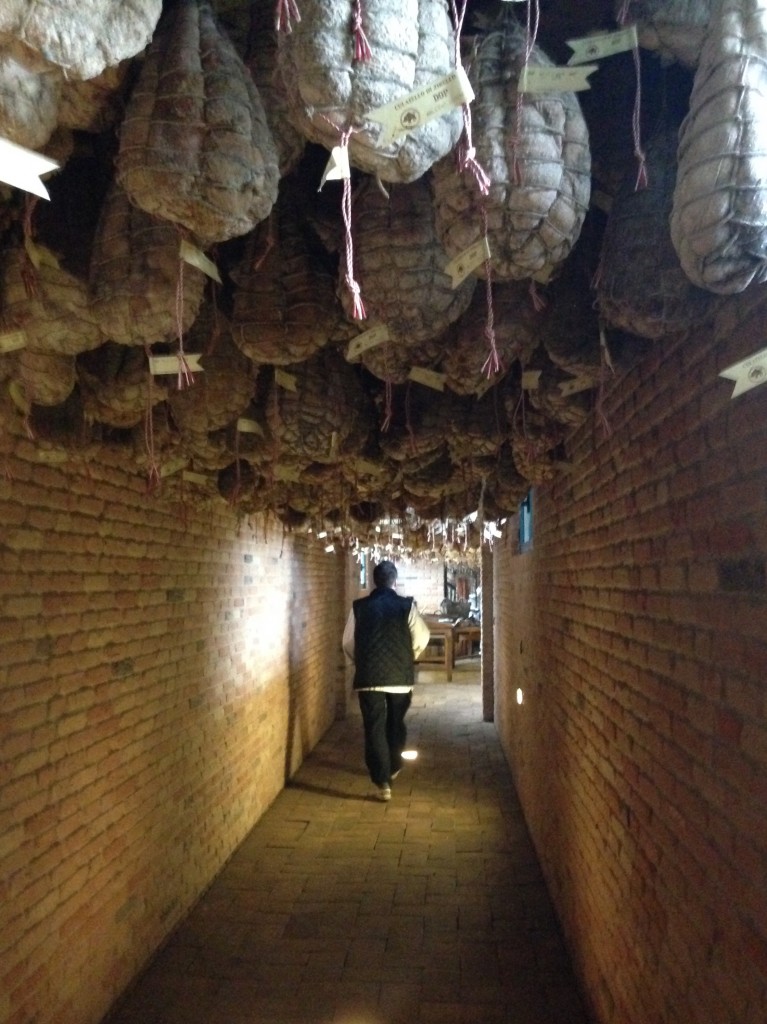
The cave is “empty”, as they were only at the start of production – which will run until February…and so there are only 4,000 or so pieces of meat hanging. Culatelli, Fioccio, Coppa, Salami Gentile, and Pancetta…..Every part of the pig is put to good use. Nothing is wasted. It’s a salumi wonderland.
“You like?” Enrico asks.
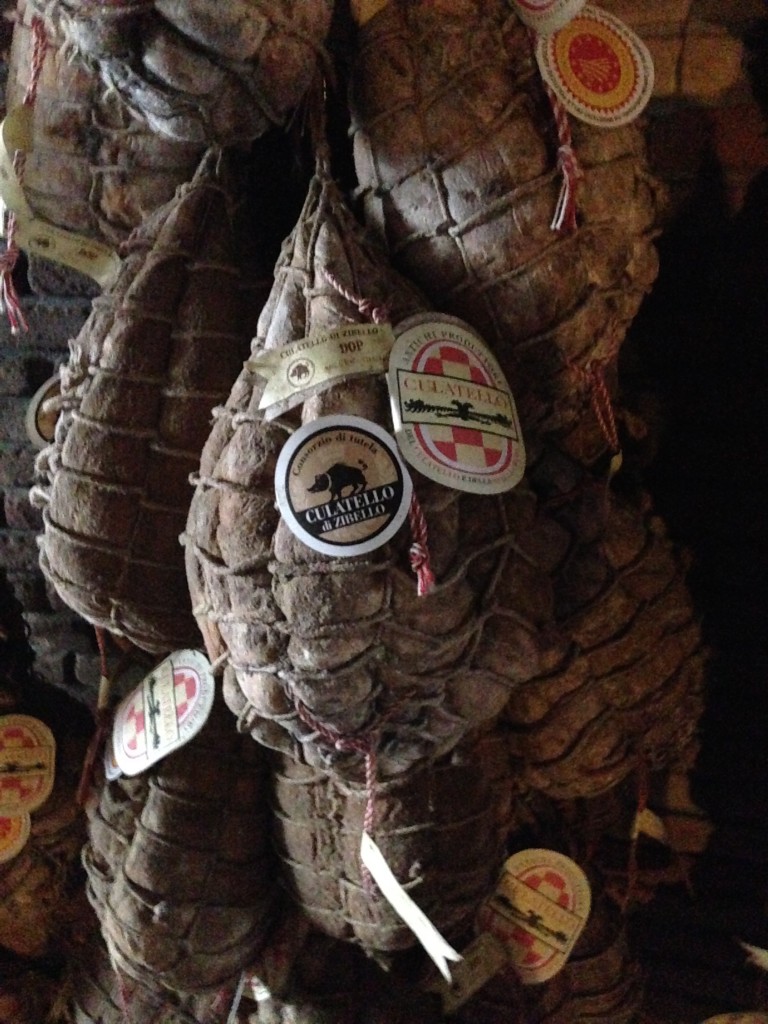
I think there are tears of joy in my eyes. Sweet salty ham love tears. I nod. This was the sort of place I had imagined, not the modern production area of upstairs.
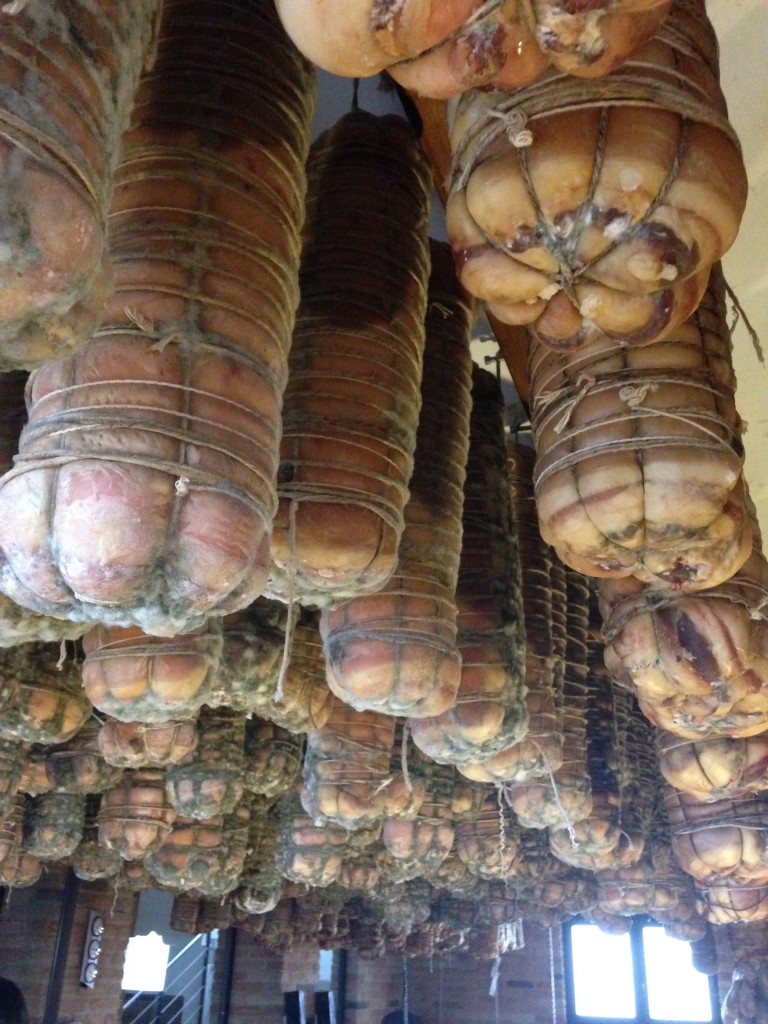
“Some people come here and say it reminds them of death. For me it reminds me of life. I don’t like very much vegetarians, and how you say…..vegans.” he smiles.
There’s a party of local businessmen in the cave – drinking wine and eating salumi. Kids running around amongst the aging hams.
The Bergonzi family renovated the entire site a few years ago….they recognized the need to become a little more sophisticated in their production. They invested in the refrigeration system we saw upstairs – highly technical with temperature and moisture controls, and alarms to sound should there be deviation. It was difficult for them to write down and create a process that had been in their collective memory for over 250 years. What is the best temperature for the meat to arrive? At what temperatures does it absorb the salt best? How many days to soak the bladders? What is the exact recipe for the soaking liquid….the list went on and on. It was a torture of sorts but they persevered to document, document….
Downstairs, in the ‘cantina naturale’ however, is a completely different story. Large windows open out to the surrounding fields – opening and closing them regulate temperature. The thick moist air I felt outside from the fog, encourages the growth of mould – which magnificently covers the salumi no matter how often it is brushed off. The windows help regulate some of the moisture. The new floors and walls are porous, like the old ones, made of bricks without grout – allowing moisture, mould and natural yeast in the air to come and go as nature intends.
Enrico shows me a well in the cave – I expect to look waaaaaay down – but then see the water starts only 2 feet below where we are standing.
“But does the cave flood?” I exclaim.
“Of course! This is natural!” He throws his head back laughing.
The mould, the flooding, the yeast growing on the floor, the cave that “breathes” the Parma fog….this and the Culatello master’s knowledge of when something is ready – this is what makes a wonderful product.
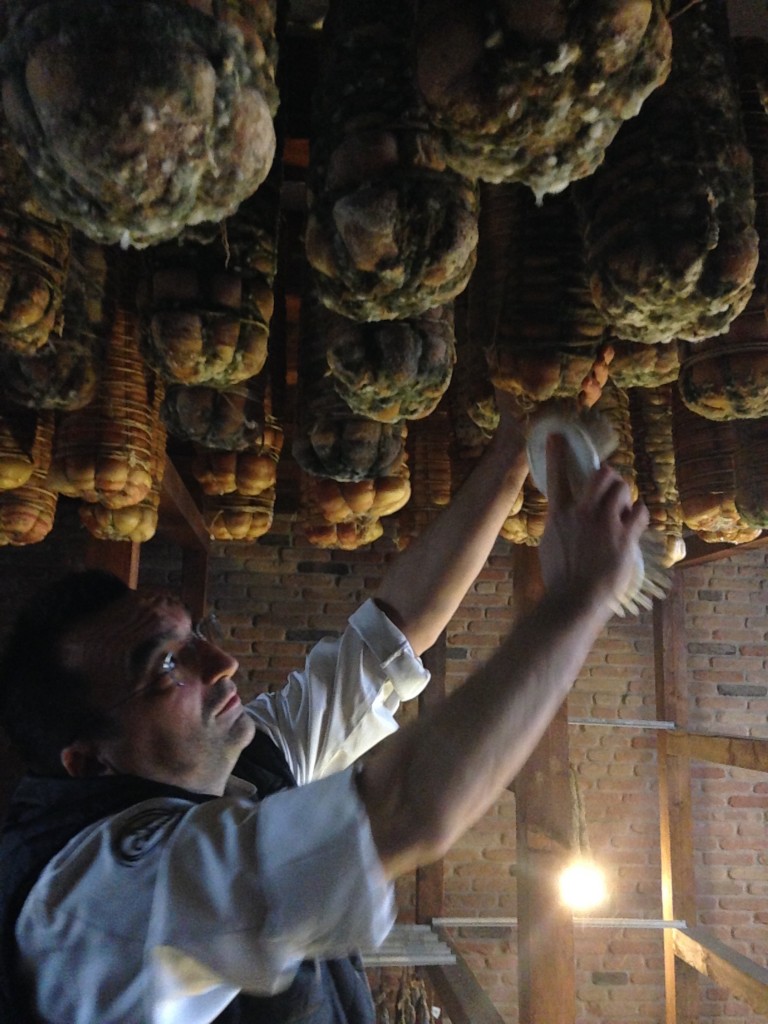
Enrico tears us away from the cave with promises of lunch. We feast on salumi and Lambrusco, a special tortelli made at Christmas with zucca and mostarda, cotechino with potato puree and white truffle tagliatele.

As we leave, I ask Enrico if he’d like to sell in Canada.
“Bah!” hands in the air.
“I went to Toronto once. I tried to sort out the paperwork. I’d rather be making salumi and cooking for my guests than being a beaurocrat. I make 7,000 Culatelli per year….if the people of Canada want Culatello, they should come and see me in Parma.”
And you should – that Culatello is some of the best ham I will ever eat in my life, …unless of course I make my way back there through the fog for another meal and another chance to walk through the Hall of Hams….Enrico will be there of course – they’ve been there for over 200 years – I don’t think they are going anywhere.
Davide from Parmagolosa was my trusty guide (once again) – for information about tours in Parma here is their site.
Here is a link to the Bergonzi family website with information about the Salumeria and their wonderful restaurant.
Of course here in Toronto, the always wonderful Cheese Boutique has Cultatello. (They have all the cool food stuff. All.) It’s not from Enrico, but quite delicious.
